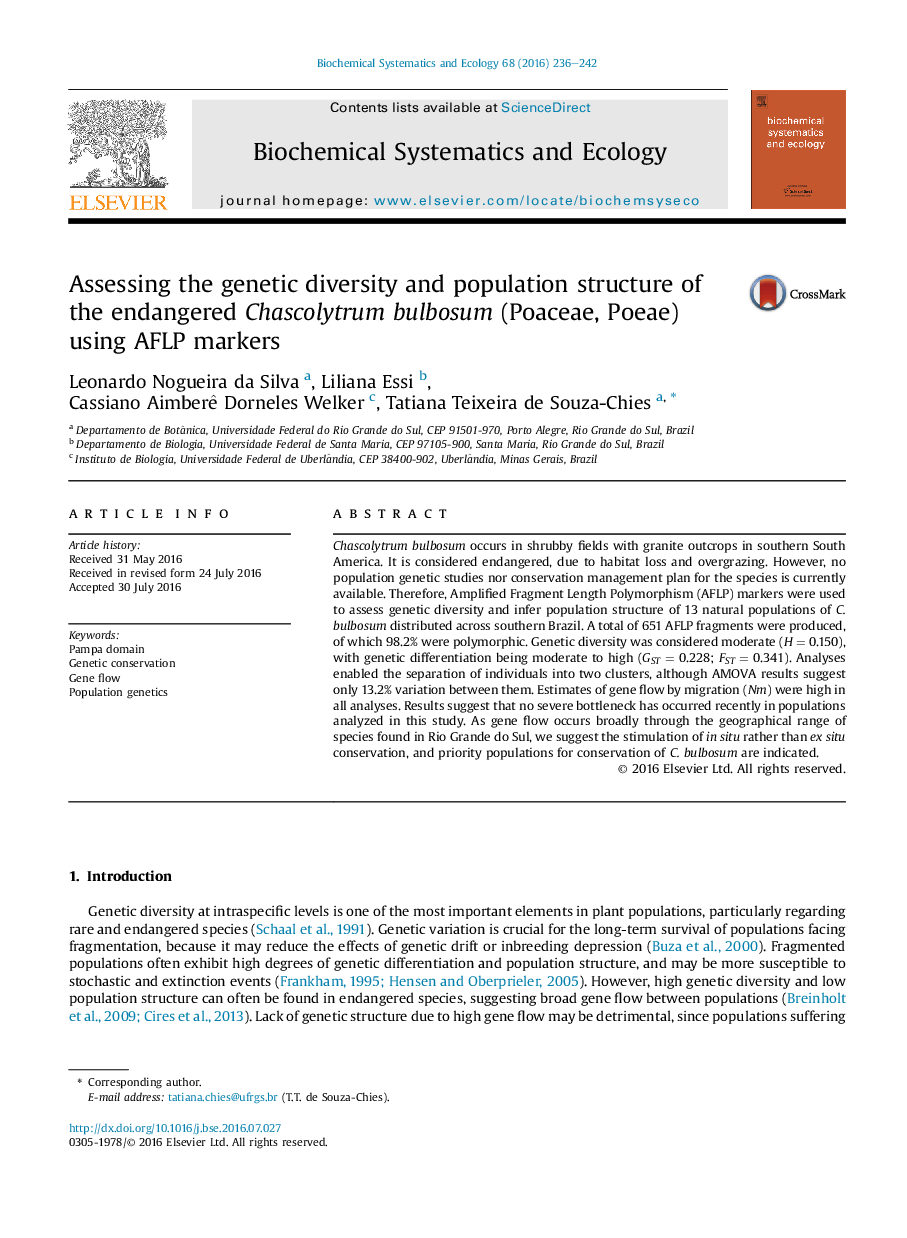| Article ID | Journal | Published Year | Pages | File Type |
|---|---|---|---|---|
| 1355154 | Biochemical Systematics and Ecology | 2016 | 7 Pages |
•A wider distribution of Chascolytrum bulbosum was confirmed.•High variation within populations was found (65.9%).•Genetic structure between all populations was considered moderate to high.•Estimates of gene flow (Nm) were considered high between all geographic locations.
Chascolytrum bulbosum occurs in shrubby fields with granite outcrops in southern South America. It is considered endangered, due to habitat loss and overgrazing. However, no population genetic studies nor conservation management plan for the species is currently available. Therefore, Amplified Fragment Length Polymorphism (AFLP) markers were used to assess genetic diversity and infer population structure of 13 natural populations of C. bulbosum distributed across southern Brazil. A total of 651 AFLP fragments were produced, of which 98.2% were polymorphic. Genetic diversity was considered moderate (H = 0.150), with genetic differentiation being moderate to high (GST = 0.228; FST = 0.341). Analyses enabled the separation of individuals into two clusters, although AMOVA results suggest only 13.2% variation between them. Estimates of gene flow by migration (Nm) were high in all analyses. Results suggest that no severe bottleneck has occurred recently in populations analyzed in this study. As gene flow occurs broadly through the geographical range of species found in Rio Grande do Sul, we suggest the stimulation of in situ rather than ex situ conservation, and priority populations for conservation of C. bulbosum are indicated.
